These Are the Best Bivy Sacks for Ultralight Overnights
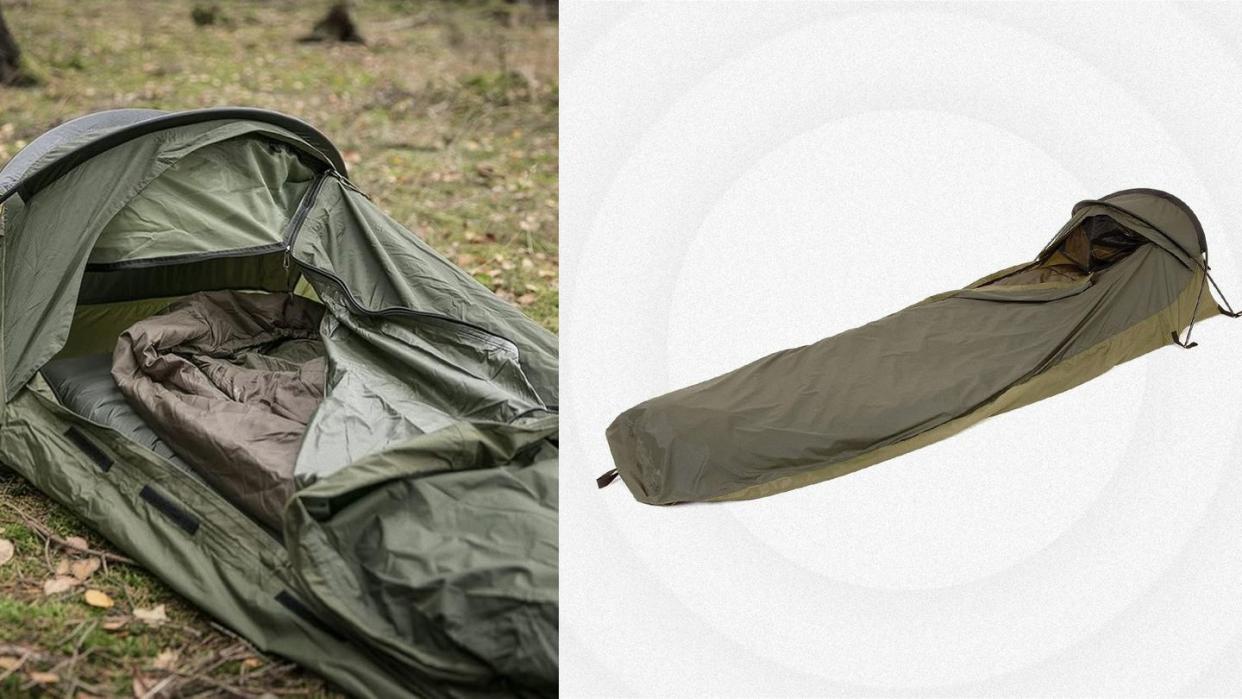
"Hearst Magazines and Yahoo may earn commission or revenue on some items through these links."
A shelter is a critical component of anyone’s outdoor adventure gear list. While a standard backpacking setup usually includes a tent, there are other options besides a freestanding tent or a finicky trekking pole shelter. Maybe you’re heading out for a fast and light trip and every ounce matters, or perhaps you need a backup shelter to keep in your vehicle or day pack in case of emergency. If this sounds like you, a bivy sack might be a good option.
In my years of backpacking, peak bagging, and base camping, I’ve spent time in every sort of shelter, from ultra-spacious to minimalist—including plenty of nights in a bivy. A bivy, short for bivouac, is a minimalist shelter that protects one person from bugs, wind, or rain in the form of a single-person tent or a water-resistant sack. Most bivy sacks have just enough room for your sleep system and your body. Pair yours with a waterproof tarp for extra protection or use it on its own in dry conditions.
The Best Bivy Sacks
Best Overall: Outdoor Research Helium Bivy
Best for Harsh Conditions: Rab Alpine Bivy Sack
Best Four-Season: Black Diamond Bipod Bivy
Best Bug Bivy: Outdoor Research Bug Bivy
Best Ultralight: Mountain Laurel Designs Superlight Solo Bivy
What to Consider
Why Use a Bivy Instead of a Tent?
A tent and a sleep system at once, bivy sacks can provide shelter from the elements without taking up the space and weight that tents require, though you won’t get the room to move around inside. Bivvies are a great option for people who are looking to shed weight and footprint space.
We recommend them for experienced campers and backpackers who know how to pack light, as they work well for ultralight fastpackers with minimalist setups or anyone who doesn’t want or need a full tent.
How Do You Use a Bivy Sack?
Bivvies hit the sweet spot between cowboy camping and carrying a full shelter—they pack down small, and they can function as long-term shelter for extended trips or emergency shelters to keep in your car or survival bag. Some bivvies can be used on their own during warm nights, or you can put your sleeping bag inside for added protection from the elements. A bivy sack will add up to 15 degrees of warmth to a sleep system, and putting your sleeping pad inside the bivy helps prevent sliding while you sleep.
Types of Bivy Sacks
There are a few main styles of bivy sacks. Some have an internal pole structure, where a set of ultralight poles create a dome or pyramid over your head for added headroom. These are the closest in style to one-person tents, with enough space for a small pack, albeit with a smaller footprint, less headroom, and lower weight than many classic solo shelters. This style is best for backpackers looking for a lightweight, no-nonsense one-person shelter you can pitch pretty much anywhere.
Minimalist bivvies are the style you might be more familiar with. They look similar to sleeping bags with some closure options around the face. These hold a sleeping bag and pad and usually sport a waterproof or durable water-repellent shell. Minimalist bivvies are for fastpackers who need little to no extra space in their shelter—they’re sometimes used by record-setting hikers going after FKTs.
Lastly, there are emergency bivvies, which use a heat-reflective, aluminum-covered fabric to function as heavy-duty emergency blankets with enclosed coverage. These are best to keep on hand during long summit days in case of bad weather or as part of your emergency kit.
Materials
Start with materials and waterproofing. Does your destination or trek get a lot of rain? You’ll want something fully waterproofed with taped seams. Low chance of rain or snow? You might get away with a DWR treatment on the face fabric, but it’s not a bad idea to pack an additional tarp. Desert trip? A bug bivy with mesh walls might be all you need.
Size and Livability
A bivy is smaller and more compact than other types of shelters. Some have full-length side zippers that are easier to get in and out of compared to top-entry models. However, top-entry bivvies seal out drafts better.
Make sure the model is large enough to comfortably sleep in while not being so big that you have trouble keeping it warm. Below, we list the dimensions of each bivy in length and the widest point (at the shoulders), but keep in mind that most taper towards the feet.
Some also have more lofted headroom than others. If you need room inside for gear, consider a one-person tent or a spacious bivy.
How We Selected
I dove headfirst into backcountry travel when I moved out West over a decade ago. Since then, I’ve backpacked thousands of miles around the country in all four seasons, using ultralight gear for a good portion of that travel. I thru-hiked the Appalachian Trail and the Colorado Trail, and recently completed 1,600 miles of the Great Divide Mountain Bike Route. I’ve been testing gear professionally for the past decade.
I’ve used bivy sacks for a few different reasons, including emergency shelter from storms in the alpine zone, ultralight backcountry travel when campsite space is limited, and when I don’t feel like setting up a tent. My ideal bivy sack is structured somewhat like a tent, but takes up less real estate and weighs less than 20 ounces. I like bivvies that are easy to set up but don’t feel claustrophobic, and I prefer a hooped or pole structure to help keep outer material away from my face.
To find the best bivy sacks, I started with my own experiences using various bivvies and talking with other avid backpackers and mountaineers who use the gear as shelter. I considered the most useful styles for the average person, and compared the space, materials, design, and weight with the cost to find the best bivy sacks. I took into consideration the different reasons for carrying a bivy—emergency shelter versus daily use on long-distance backcountry travel—to help inform my picks.
Helium Bivy
A favorite amongst bivy fans, Outdoor Research’s Helium Bivy combines the headspace of its Bug Bivy with the protection of a fully enclosed shelter. This is also easy to get in and out of thanks to the generous clamshell opening, and the hooped head area provides plenty of breathing room.
The Pertex Shield fabric is lightweight but tough, with a fully waterproof construction and abrasion-resistant fabric so you can pitch this on any rugged surface and feel confident it’ll last the full season. The mesh is similar to their Bug Bivy, and the fly can be zipped shut during bad weather, or fully opened for maximum ventilation.
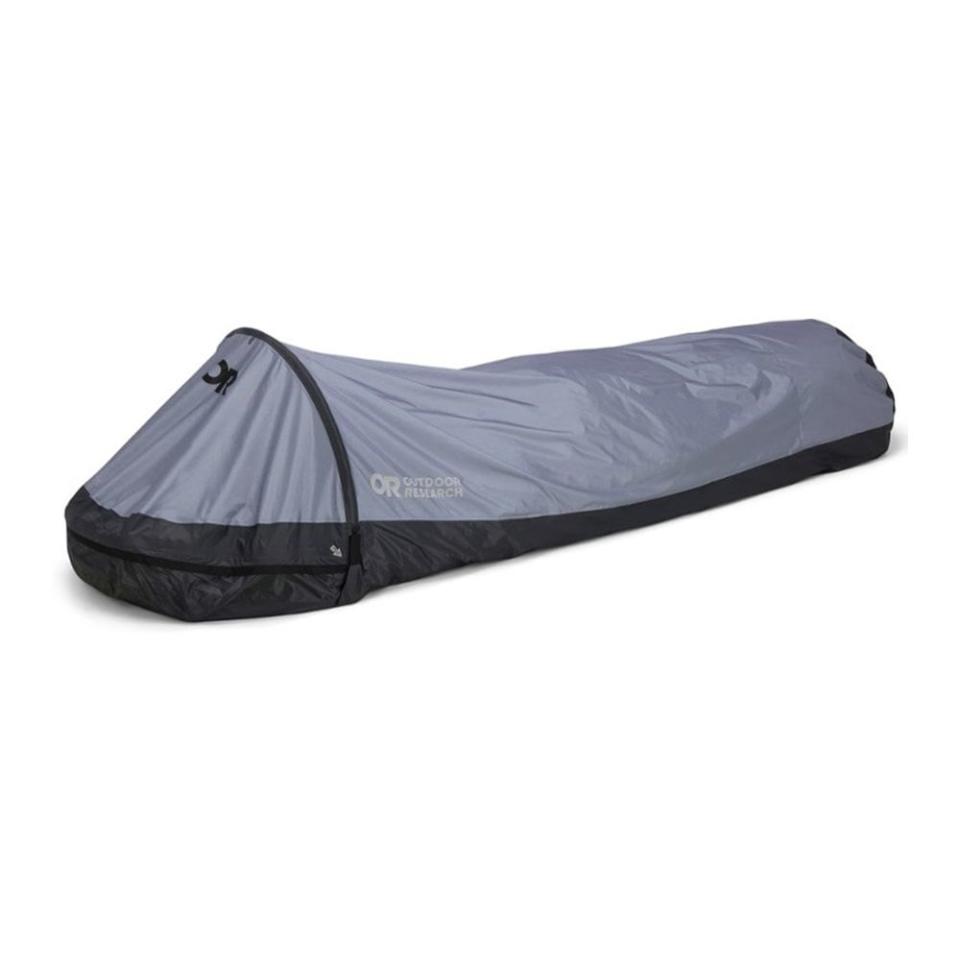
Helium Bivy
rei.com
$199.00
Alpine Bivy Sack
This is a highly durable and compact bivy that can take the place of a one-person shelter for true minimalist backcountry travelers. Although this shelter does weigh about as much as some ultralight tarp-tents, you get the benefit of a narrow footprint that can fit pretty much anywhere, as well as less surface area to grab the wind.
The Alpine Bivy packs down to the size of a water bottle, has an eVent membrane for maximum waterproofing and breathability, and has a durable nylon floor so you don’t have to worry about tears or punctures on rocky or rough campsites. The entrance zips open and has storm flaps for more protection—ideal for alpine ascents or an emergency shelter for harsh conditions above the treeline.
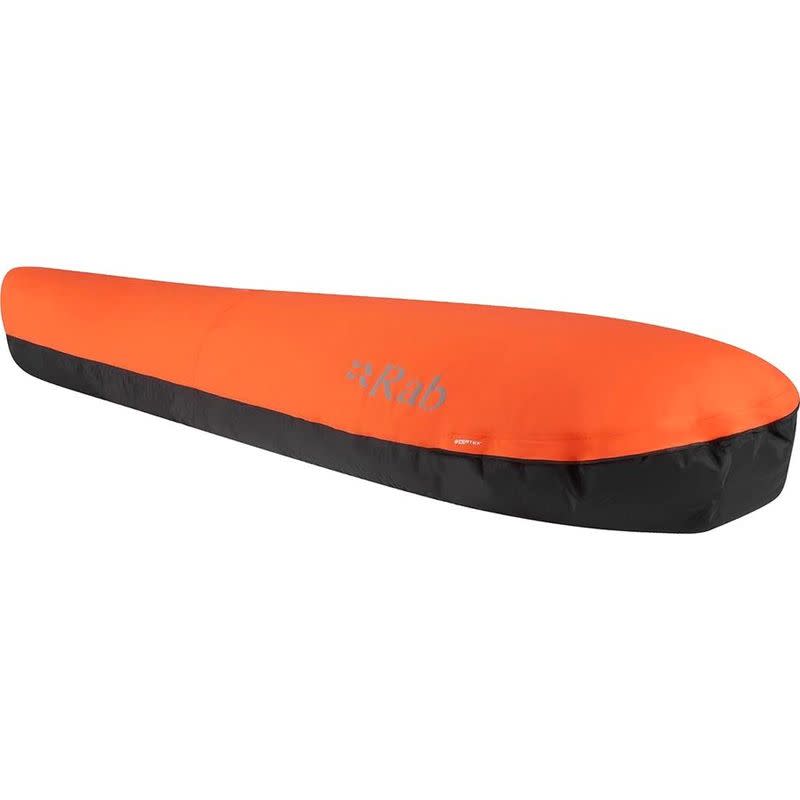
Alpine Bivy Sack
backcountry.com
$250.00
Bipod Bivy
The Bipod is among the pricier options we recommend, but for mountaineers, it’s one of the best bivy shelters out there. The alpine-ready shelter provides protection during all four seasons, thanks in part to the ToddTex single-wall fabric that has fully taped seams and a waterproof, breathable membrane.
Bivvies are prone to condensation from your breath since they’re so small, but the Bipod has some of the best performance when it comes to reducing overnight moisture accumulation due to its mesh door panels. The lightweight aluminum pole with a shock cord gives ample head and shoulder room inside—just be careful to not overextend the shock cord to preserve its lifespan.
We love the zippered entry and the option to leave the mesh door panels open for added ventilation on clear, warm nights. You’ll be carrying more weight with this bivy, but the protection, space, and four-season capabilities are worth it.
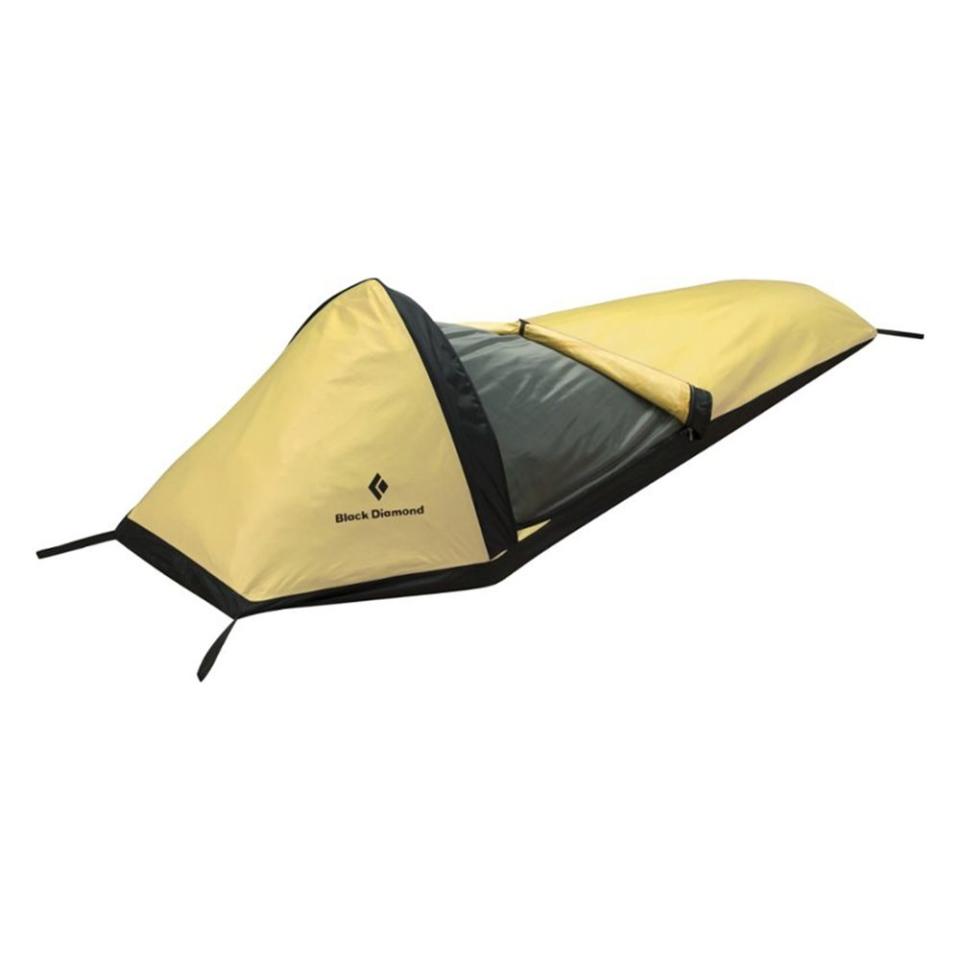
Bipod Bivy
rei.com
$284.73
Bug Bivy
This is the only bivy on the list without any sort of protection from precipitation, but for bugs and ventilation, it can’t be beat. It’s made with ultra-fine netting to keep even the tiniest insects out, and we love the generous 50-inch girth of the U-shaped Delrin pole that keeps the mesh away from your face.
It has a raised foot area that can be tensioned with tie-outs, so you can stash gear inside and keep the material off the bottom of your legs. We like using the tie-outs to maximize space, but they aren’t necessary for the structure of the shelter. This bivy comes with straps to prevent your sleeping pad from sliding and a wide zippered opening along the top. For rainy expeditions, pair it with a pole-and-tarp system.

Bug Bivy
rei.com
$99.00
Superlight Solo Bivy
This ultralight bivy has been around in some iteration since its release in 2004. With a net-covered face window, a high-loft build that won’t compress your sleeping bag, and a surprisingly spacious design, the Superlight Solo hits the sweet spot for ultralight fastpackers who want some protection but don’t need a fully waterproof bivy or the space of a tent.
This shelter was used by Joe “Stringbean” McConaughy for the duration of his Appalachian Trail self-supported speed record, and continues to be a favorite with ultralight backpackers. DWR treatment on the face fabric comes standard, but you can partially customize the materials and size, including the option for an upgraded Dyneema floor.
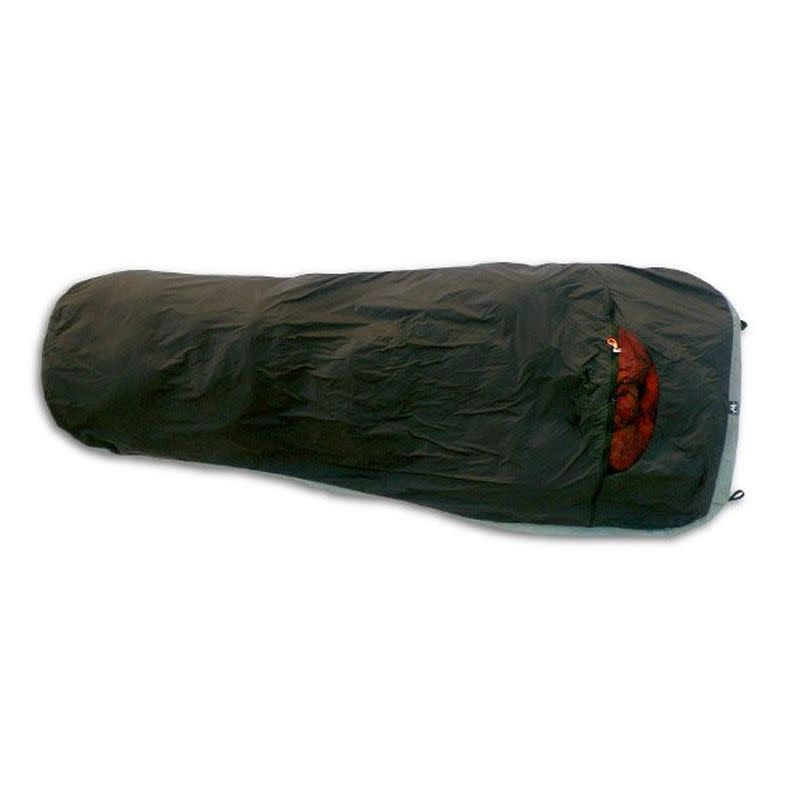
Superlight Solo Bivy
mountainlaureldesigns.com
$175.00
Emergency Bivvy
One of the best things about bivvies is the ability to carry a fully enclosed emergency shelter, and this model is a true emergency option. Because this bivy packs down to the size of a standard soda can and weighs under 4 ounces, the benefits of carrying it far surpass the added pack weight.
Stash it in your day pack or general outdoor gear bag. We even recommend keeping one in your car in the winter. The aluminum-coated fabric reflects 90 percent of your body heat when deployed. It’s built with water- and windproof material for surviving an unexpected night out in the elements, and unlike mylar emergency blankets, the enclosed design blocks drafts and is reusable, stuffing back into its own carry pouch.

Emergency Bivvy
amazon.com
$14.31
E-Bivy
This lightweight, fast-pitch bivy was designed in conjunction with mountaineers based on the criteria and livability they look for in the lightest, most convenient backcountry shelters. This is a fully waterproof, durable bivy that can stand up to emergency situations and gnarly weather in any terrain, with a small footprint that can nestle in between trees, rocky ledges, and any other space where a tent would be challenging to pitch.
The rainfly on this bivy is technically breathable, but we did find the Pro Bivy collects more condensation than models with more head space and mesh. Still, it serves as one of the best and most versatile options for the average hiker in need of a bivy.
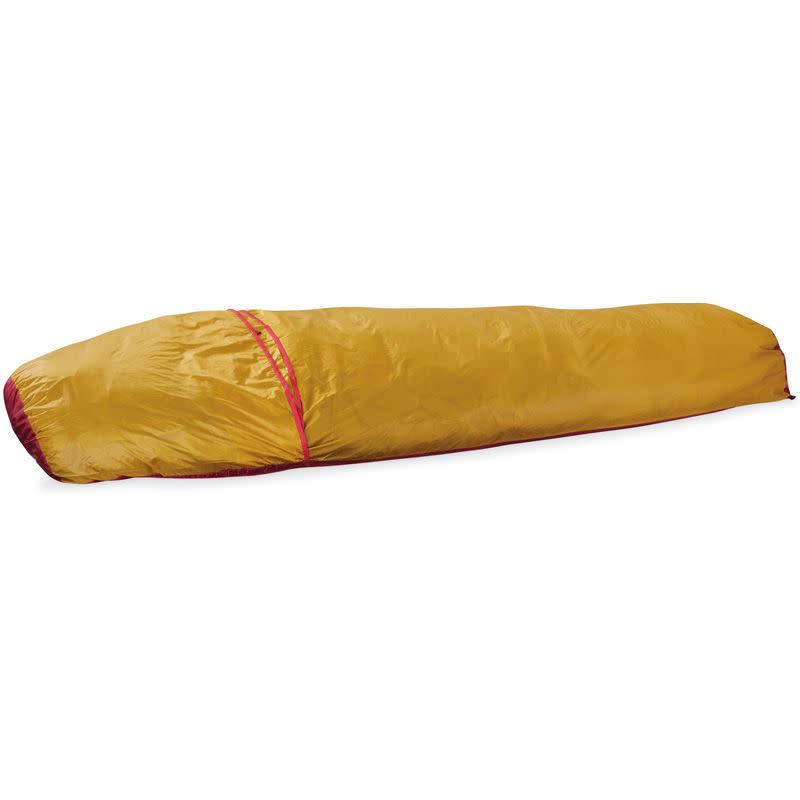
E-Bivy
rei.com
$99.95
Raider Bivy
Looking for the low profile and minimal footprint of a bivy without losing some of the space, stability, and mobility of a tent? This bivy has a 23.5-inch head height and actually has over 20 square feet of interior space, which means you’ll get some added weight, but the extra stability and interior space make it worthwhile.
This is also a highly durable model, with a similar waterproof Pertex material as the Helium Bivy, and taped seams for complete protection during storms. The setup is quick with one aluminum pole, and you can unzip the fly to vent the interior through the mosquito netting door.

Raider Bivy
amazon.com
$281.25
Stratosphere Shelter Bivy
Similar in design to the Rab Ridge Raider but a few ounces heavier, this reasonably priced bivy is aimed at outdoors enthusiasts and hunters who want a low-profile, easy setup for their overnight outings.
The footprint and height is smaller than a tent, but the head canopy is spacious and it has plenty of structure to ease some of the claustrophobic elements of tighter bivvies. This bivy packs into its own compression sack, and the head fly opens up for a fully enclosed no-see-um mesh to let the air flow and keep the bugs out.

Stratosphere Shelter Bivy
amazon.com
$171.03
You Might Also Like

